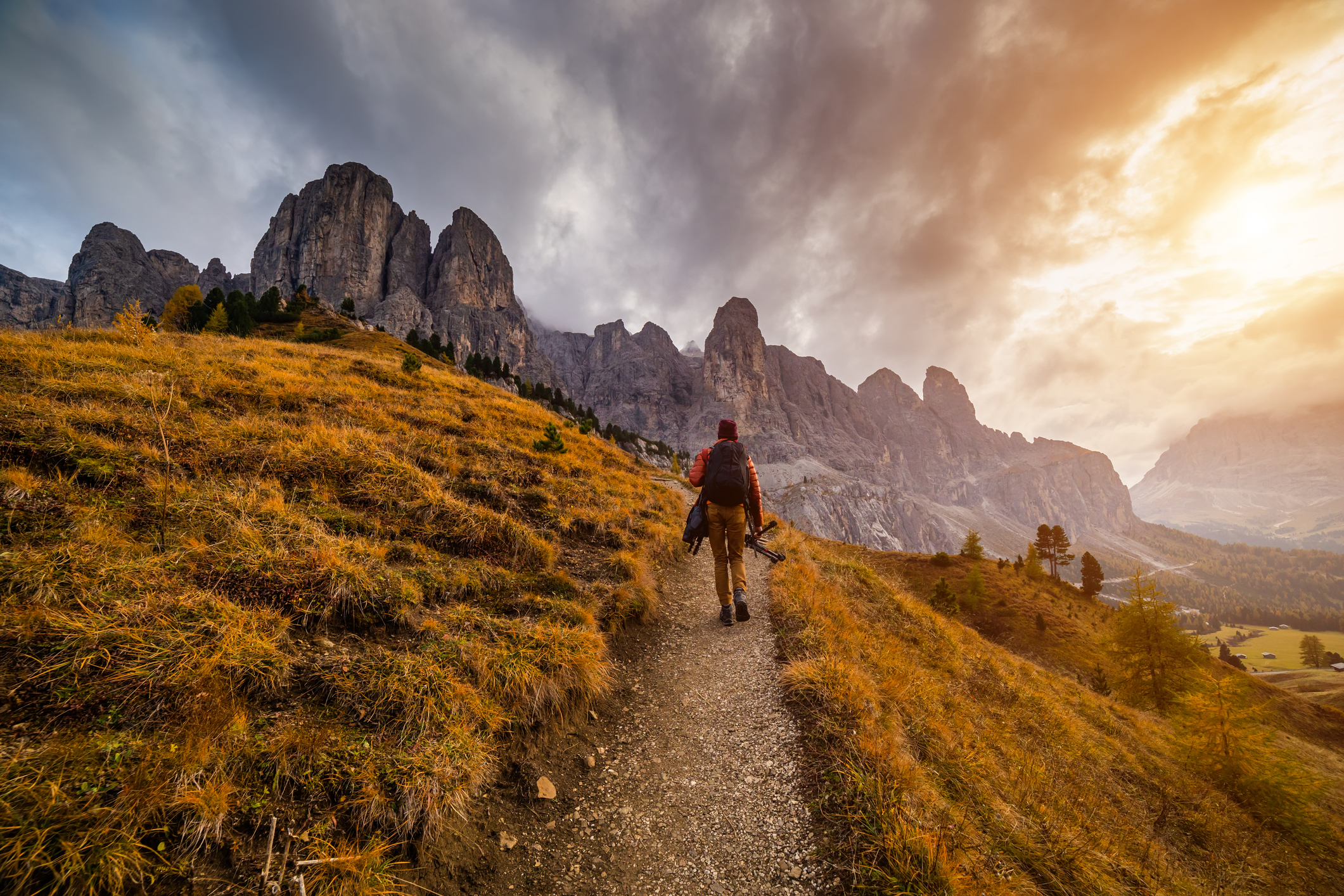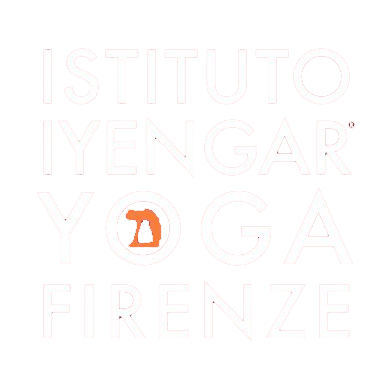
Walking in the mountains and the practice of yoga
B.K.S. Iyengar before leaving us in 2014, had written a valuable book for every person who practices a sport (Yoga and Sport, ed. Mediterranee). The book also provides many suggestions to help solve the various problems related to sport, competitive or not. Many of which are testimonies of world-famous athletes who have enjoyed the benefits of yoga, therefore we can indeed say that yoga helps any sporting activity. From the very first year of practicing yoga, we notice a remarkable change in our body: whether we are running, swimming or even walking in the mountains, we feel a new energy, a better muscular power and greater endurance.
As we all know the āsanas tone those muscles that support the bones of the body, stretch and tone tendons and ligaments, giving them greater elasticity.
When the yoga practice becomes a constant companion in our lives, we realize that walking in the mountains is something very akin to yoga. In the practice of āsana we learn to regulate inhalation and exhalation, so in the mountains we learn to regulate the pace with the breath: a cadenced pace that does not fatigue the muscles. We choose the different points of support of the foot according to the slope of the path, making sure that there is the same rhythm without changing the muscle power: the breath remains regular and rhythmic. In this process the mind empties itself of thoughts and we are present in every moment, at every step. When the mind empties itself, the brain relaxes and the inner silence takes over: we become aware of what is around us, the step on the soft ground, the scents emanating from the plants, we pay attention to the sounds of the woods, to the wind swaying the treetops; we are completely immersed in Nature, we feel we are part of it. When we do our yoga practice alone and we create actions within a certain position, in that moment we become aware of the reactions that occur within our body. A silence of the mind is created and we become only spectators, silent witnesses. That same inner silence that takes the name of Pratyāhāra, which is the prelude to Dhārana, the concentration focused on something. We can say that those of us who are able to create both experiences can feel that yoga and walking interpenetrate so that one helps the other to develop greater awareness in listening.
Yoga, as mentioned before, also helps in physical training. There are positions that particularly help in mountain climbing. It is necessary to tone the quadricep muscles in order to have greater power in the ascent and at the same time to lighten the weight on the knees during the descent. All standing positions are recommended, with special attention to maintaining, in addition to hip/knee alignment, the thigh exactly parallel to the floor in positions where the leg is bent, as in:
– Pārśvakoṇāsana – Vīrabhadrāsana I and II.
In case of knee problems, it is advisable to do these positions with the whole front foot on the support of a wooden brick, placed in turn against a wall so that it does not move, the inner ankle stretched up toward the inner knee. To give strength to the legs, in addition to these positions mentioned, are very useful:
– Ardha Chandrāsana – Vīrabhadrāsana III.
The opening of the chest, especially that of the upper part and the area of the armpits, is the basis for “building up” the energy of the organism. It is important that the heart performs its task of pumping blood without constriction, as in the case of a closed and hollow chest. Useful in this case is to walk with mountaineering poles adjusted to the right height between chest and elbow and according to the slope of the terrain.
– Ūrdhva Baddhaṅguliyāsana, – Ūrdhva Hastāsana,
– Adho Mukha Śvanāsana.
– Ūrdhva Mukha Śvanāsana.
Among the āsanas that help to give greater strength and endurance are:
– Śirṣāsana
– Chatuṣpādāsana
– Halāsana
– Sarvāngāsana
The latter are very important postures: they tone the muscles that support the spine and should be performed with special attention to the opening of the upper chest, so that the neck is well extended, the shoulders open.
In Halāsana, Sarvāngāsana and Chatuṣpādāsana the shoulders must be rotated so that the point of support is on the top of the shoulders: it is therefore often necessary to use folded blankets, so that shoulders, elbows and base of the neck are higher than the head. The belt on the arms, adjusted to the same width as the shoulders, just above the elbows, keeps the arms in line with them and prevents the elbows from spreading, thus preventing the shoulders from closing.
At the end of the walk, back at home, the body needs to find relief and counteract heaviness and stretch the lumbar area, relax the psoas.
This is a helpful sequence:
– Lie on your back and hug your legs bent to your chest, separating your knees. You relax the lower back and psoas at the same time.
– Supta Pādāṅguṣṭhāsana I – II – III using a wall to push/support your feet: you re-stretch the muscles and tendons of the legs, taking weight off them. The connection that is created between the femurs and the pelvis gives space within the pelvis, relaxes the internal abdominal area and stretches the lumbars.
– Adho Mukha Śvanāsana, possibly with pulling the pelvis to the ropes or a long belt, the head resting on a soft support. At least 3 minutes.
– Uttanāsana resting head and arms on a chair. 3 minutes approx.
– Adho Mukha Virāsana for 2-3 minutes.
– Śirṣāsana for 5 to 7 minutes, possibly with variations of Upaviṣṭha Koṇāsana and Baddha Koṇāsana.
– Supta Virāsana for 5 minutes: also helps to relax the calves. Use an inclined support for the spinal column and a cross folded blanket under the lower part of the shoulder blades to increase chest opening and backward rotation of the shoulders.
– Ardha Baddha Padma Paścimottānāsana. It is useful that the pressure of the foot on the thigh causes the upper thigh to descend towards the femur and relaxes the lower thigh that has been contracted during the ascent.
– Paścimottānāsana with the forehead resting on a support, for 2 to 3 minutes. Use the foot belt and hold it with the hands while the elbows are open outward.
– Sarvāngāsana with the chair for 5 minutes.
– Halāsana with thighs resting on a chair for 3 minutes.
– Viparita Karani for 5 minutes.
– Supta Swastikāsana with the legs and thighs resting on the cushion, for 5- minutes, alternating crossing the legs.
– Śavāsana with a pillow under the legs, at knee level.
One of the Prāṇāyāma useful for helping the breath in the mountains is Ujjayi Viloma I, in which pauses are taken during inhalation, either in Śavāsana or Swastikāsana or Ardha Padmāsana.
This type of Prāṇāyāma helps develop lung capacity by creating elasticity in the intercostal muscles. It is useful to do it early in the morning, before starting a hike by giving the necessary psychophysical energy.
Only when you have become an expert in Prāṇāyāma you may introduce the Antara Kumbhaka, the holding of the breath at the end of inhalation, while seated.
article by Luigia Bertelli
***ૐ***
